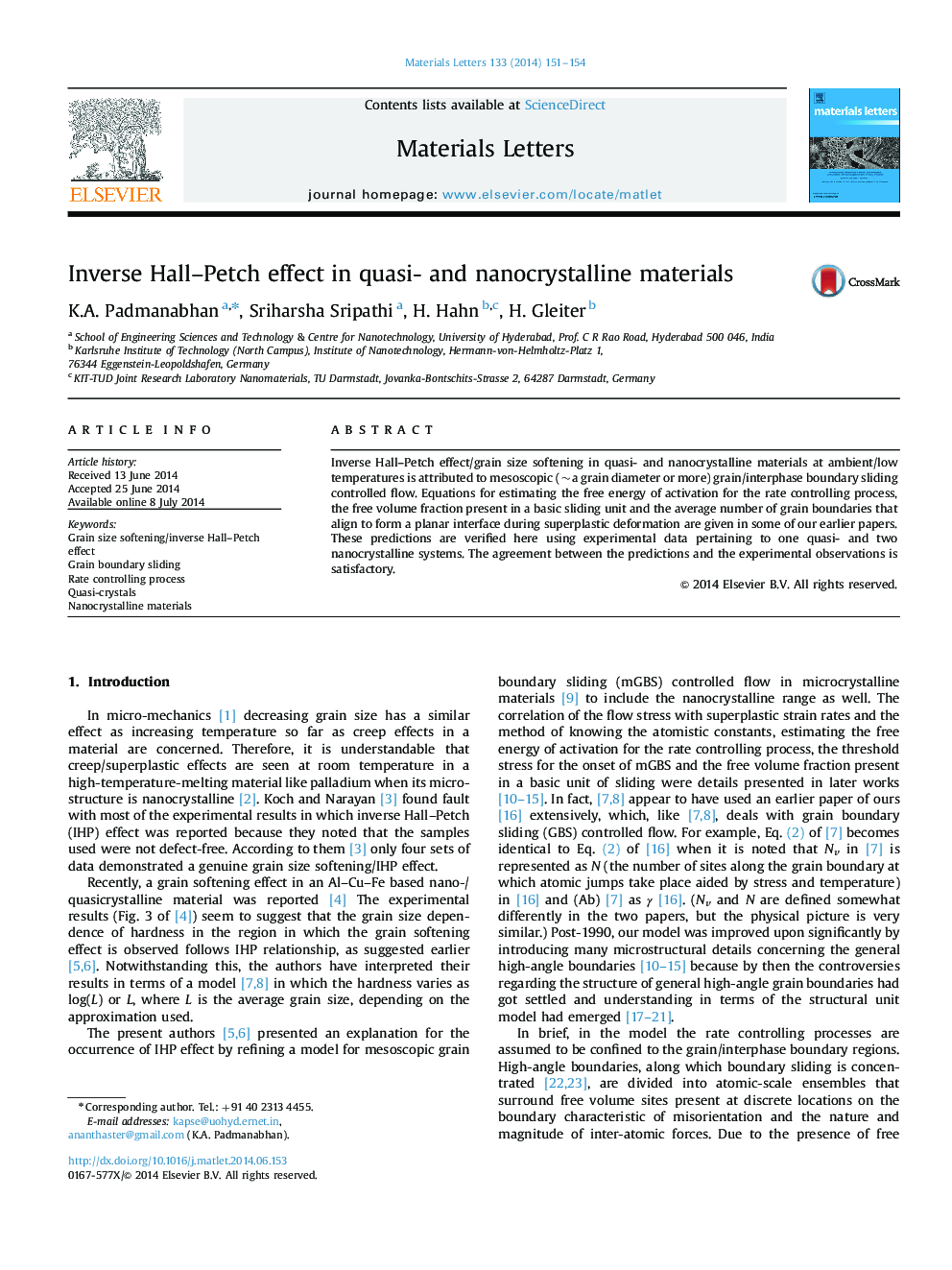| Article ID | Journal | Published Year | Pages | File Type |
|---|---|---|---|---|
| 1643752 | Materials Letters | 2014 | 4 Pages |
•The origin of grain size softening/inverse Hall–Petch (HPE) effect is traced.•Data concerning one quasicrystalline and two nanocrystalline materials are analyzed.•The equations needed for the analysis are taken from our earlier publications.•The agreement between the predictions and experimental results is good.
Inverse Hall–Petch effect/grain size softening in quasi- and nanocrystalline materials at ambient/low temperatures is attributed to mesoscopic (~a grain diameter or more) grain/interphase boundary sliding controlled flow. Equations for estimating the free energy of activation for the rate controlling process, the free volume fraction present in a basic sliding unit and the average number of grain boundaries that align to form a planar interface during superplastic deformation are given in some of our earlier papers. These predictions are verified here using experimental data pertaining to one quasi- and two nanocrystalline systems. The agreement between the predictions and the experimental observations is satisfactory.
